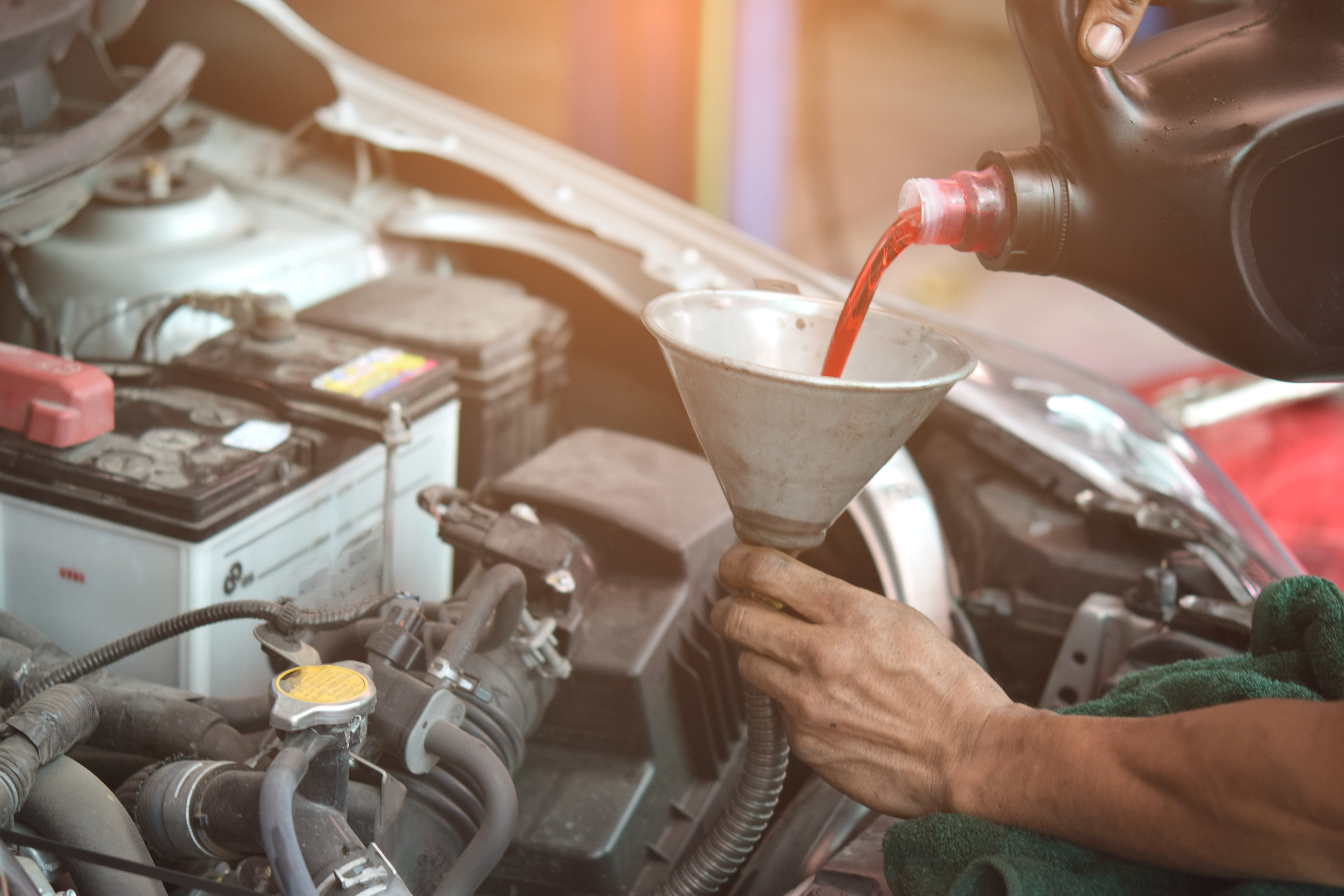Whether you drive and get vehicle repair on a car with an automatic transmission or a manual/standard one (a stick shift), all cars have transmission systems. Basically, automatic and manual transmissions perform the same tasks, but they do it very differently. Here is a quick overview and a few things it may help you to understand about your car’s transmission.
What is a transmission?
The transmission is the device that sends the power from the engine to the drive wheels. Every car’s engine runs at its best at a certain RPM (revolutions per minute) range. The transmission makes use of various gear combinations to ensure that the power gets to the wheels while keeping the engine within that RPM range.
In first gear, the engine turns much faster than the drive wheels, while in high gear (usually 4th or 5th, depending on the car) the engine is “relaxing” even though the car may be going pretty fast.
In addition to the forward gears, the transmission also has a neutral position that disconnects the engine from the drive wheels; it can roll, but no accelerating power goes to the wheels. In reverse, the drive wheels turn in the opposite direction, which allows for backing up. Finally, there is park. In this position, a bolt-like mechanism slides into the output shaft, locking the drive wheels. This keeps them from turning, and makes it impossible for the car to roll.
There are many parts, or components, in a car’s transmission. Depending on whether your car is automatic or standard (manual), and front or rear-wheel drive, these components are arranged differently and function in different ways. To keep it simple here, we’ll just go on to describe a few of the signs to watch for that might alert you to transmission problems before they get out of hand.
These are the signs of transmission trouble.
We’ll say it straight-out: transmission replacement as part of your vehicle repair can be extremely costly. But there's good news! In many cases you can take preventative steps to never get to that point, by knowing what to look for and what to do.
- Watch for leaks or stains under your car. Seeing red oil spots? Best to have your trusty neighborhood auto technician take a look. It could be coming from either your transmission or your power steering; they would leak in roughly the same area. If all you see are a few drops you may be able to postpone repairs as long as you check and top off your transmission fluid level often - but don’t make that determination without your technician’s input. It’s only a temporary solution and you could be asking for trouble by waiting.
- Check fluid for color and odor. Do this while the car is running and on level ground. (Again, we’ll be glad to check all your fluid levels for you while you grab a cup of coffee, if you want to keep your hands clean.) Pull the transmission dip stick out and check for color and odor. Transmission fluid looks a little like cherry cough syrup. If yours is cloudy or muddy looking, or if it smells burned, you should get it professionally checked. Most likely your auto mechanic or technician will recommend a transmission flush or a transmission fluid exchange.
- Be alert for unusual noises, vibrations and shift behavior. Today’s cars, with modern transmissions, should shift smoothly and quietly with light to moderate acceleration. If you feel roughness or hear noises when shifting, or noises coming from the floorboards, contact us right away. We’ll let you know if there is trouble, and what needs to be done.
Any of these signs may be cause for concern. Even if you feel you can’t afford transmission repairs right away, Metro Motor (your trusted neighborhood auto repair shop) may be able to offer you some tips on what to do and not do to help prolong your car’s transmission life until you can afford the full repair.
Keep exploring.
![]()
Request
Service




